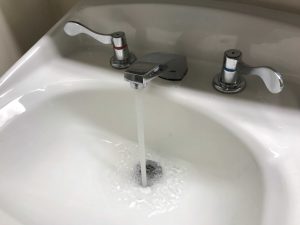By Erica Scalise

As part of a challenge by the Department of Environmental Protection, Fordham is one of six universities partaking in a conservation campaign to reduce its campus-wide average water consumption.
The challenge asks that the university and five others, including Long Island University’s Brooklyn Campus, Pace University, St. John’s University, The New School and Weill Cornell Medical, reduce their water consumption by five percent. The reduction will amount to a savings of approximately 1.3 million gallons of water per month until its conclusion in August of 2020.
According to the New York City Department of Environmental Education (DEP), this is the fourth of New York City’s sector-specific campaigns aimed at developing better water management. The challenge follows suit of past water conservation programs in hotels, restaurants and hospitals.
“These six universities are helping DEP to conserve one of our city’s most precious resources, our world-renowned drinking water supply, by targeting ways to reduce their campus’ water consumption and promoting water conservation among their faculty and students,” said Vincent Sapienza, DEP commissioner.
In order to protect the water supply, the university will be upgrading domestic-use water fixtures around campus as part of the challenge. Participating universities will also be initiating student-led water conservation campaigns.
Rev. Joseph M. McShane, S.J., president of the university, said Fordham is proud to be part of the effort.
“The human family is increasingly becoming aware of the limits of our planet, including its supply of fresh water,” said McShane. “We are called to be good stewards of our water supply and all natural resources, not merely for the good of our fellow New Yorkers, nor the entire population of the globe, but for all living things.”
The DEP plans to utilize the lessons learned from the New York City Water Challenge to Universities to enact a best practices to manage water in higher education buildings.
DEP records indicate that over one billion gallons of water are supplied each day to more than nine million residents, including 8.6 million in New York City.
According to the DEP, encouraging water-usage reductions in universities is one facet in a greater effort to conserve water. This effort is part of a $1.5 billion initiative to ensure clean, reliable and safe drinking water for New Yorkers.
Lily Round, FCRH ’20, president of Students for Environmental Awareness and Justice (SEAJ), said this is step one in the right direction for a university that should be doing more.
“We hope this effort will be more fruitful than watering sidewalks in the rain,” said Round. “Any action the administration takes toward sustainability should be applauded. However, there still is much more progress to be made.”







































































































































































































